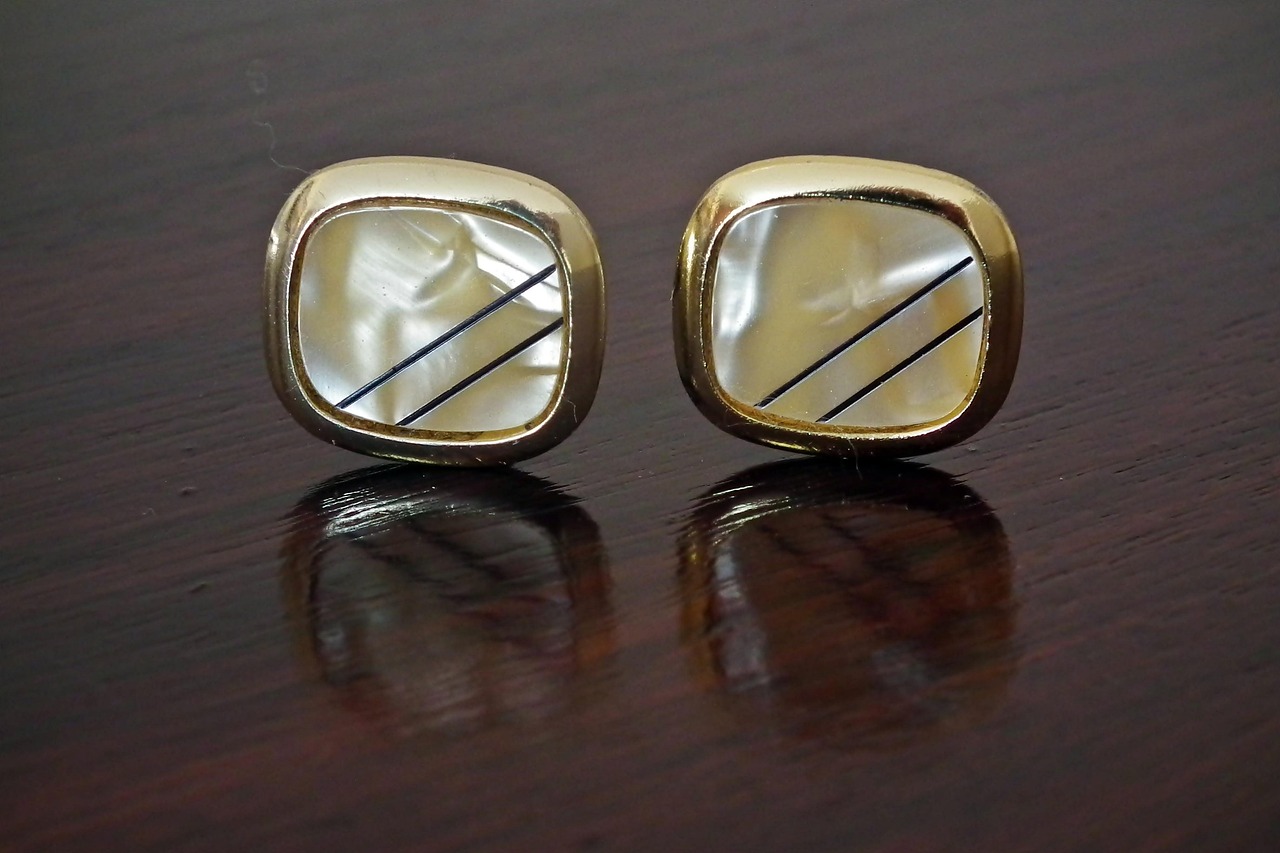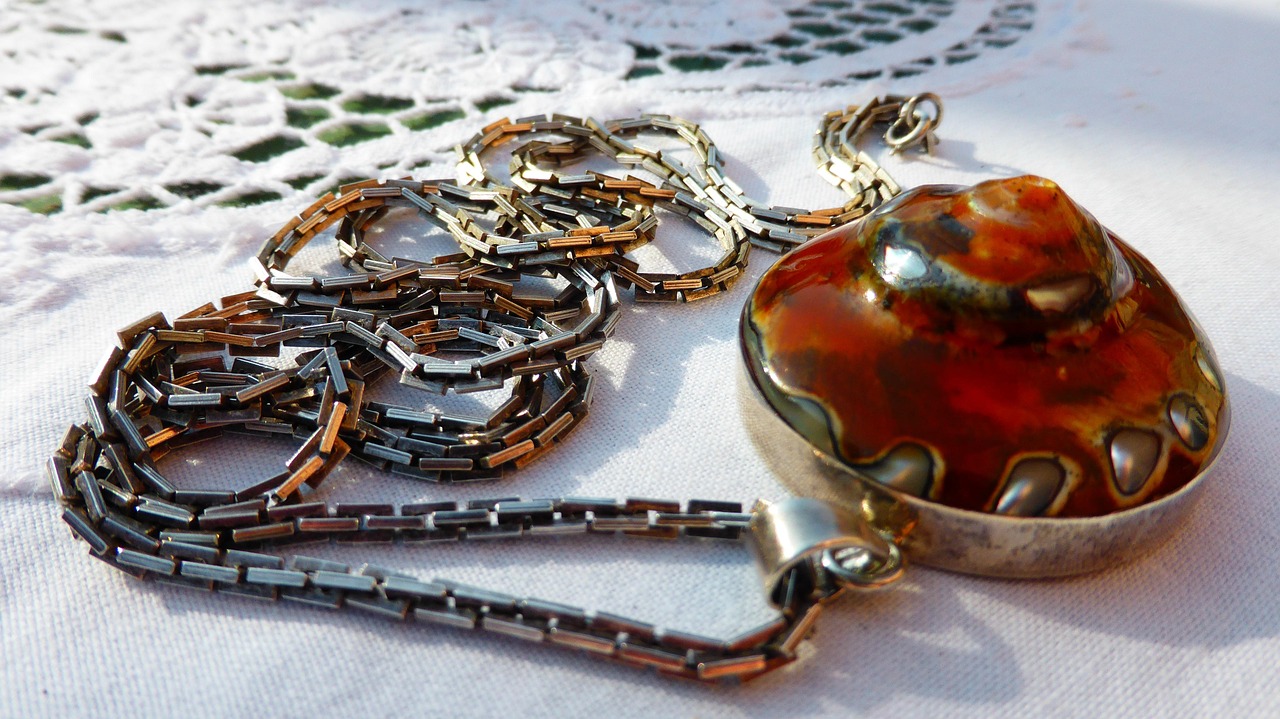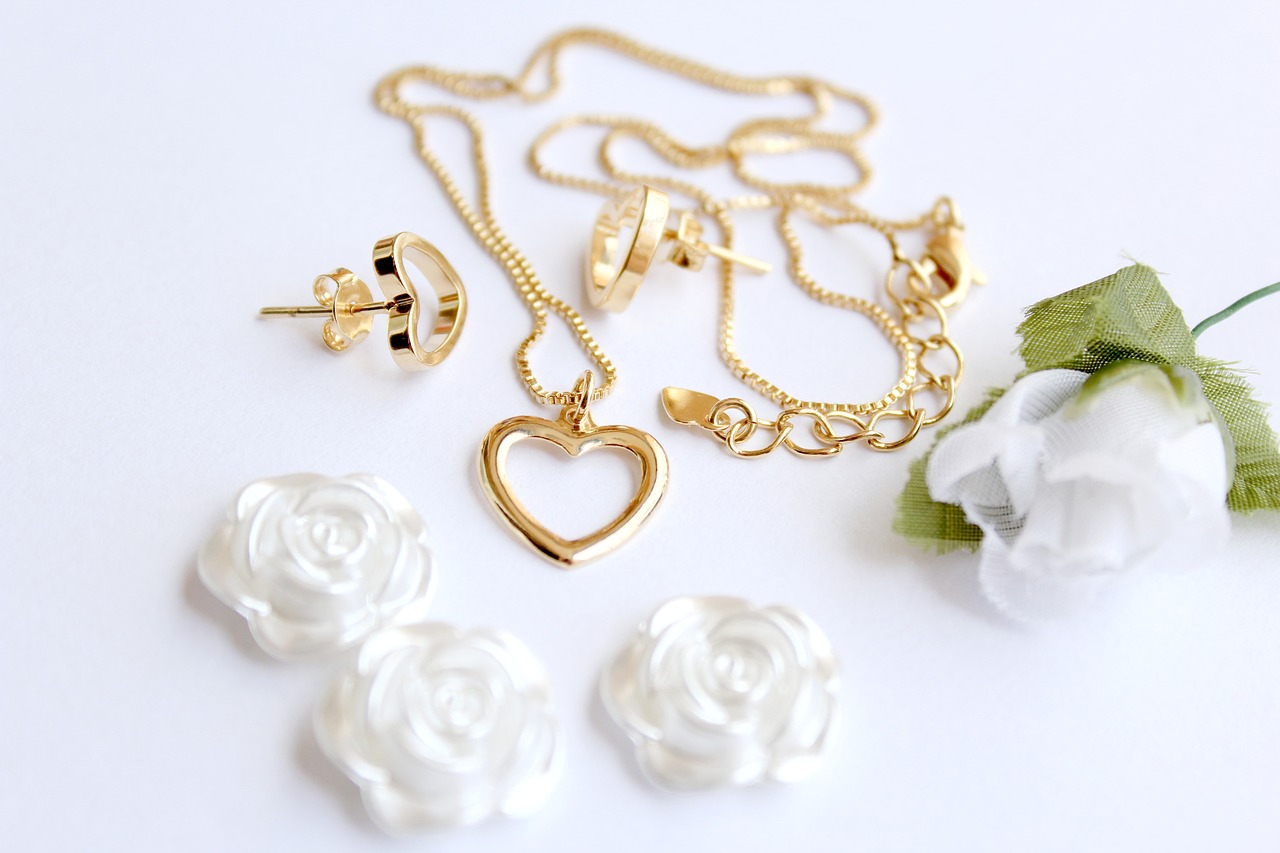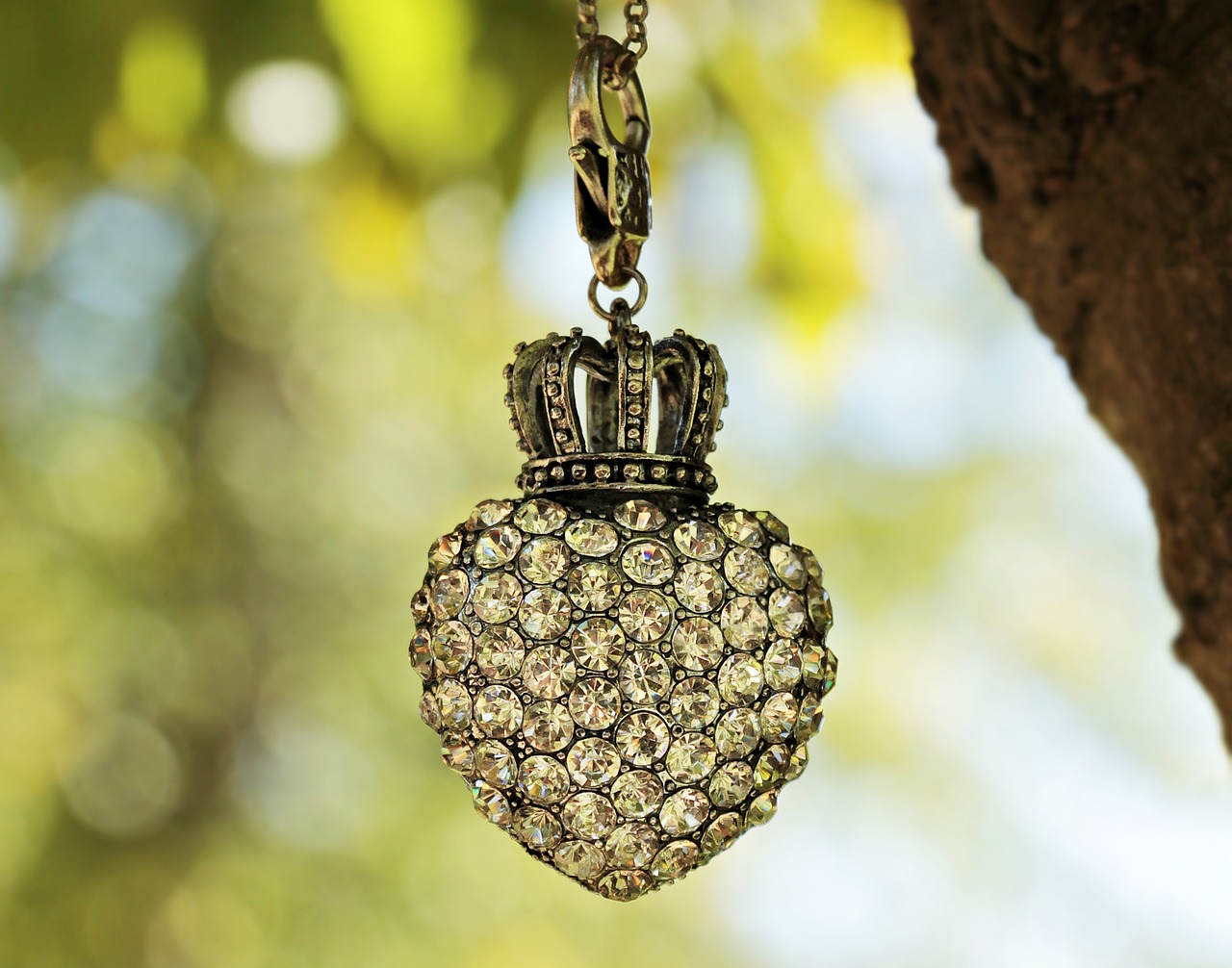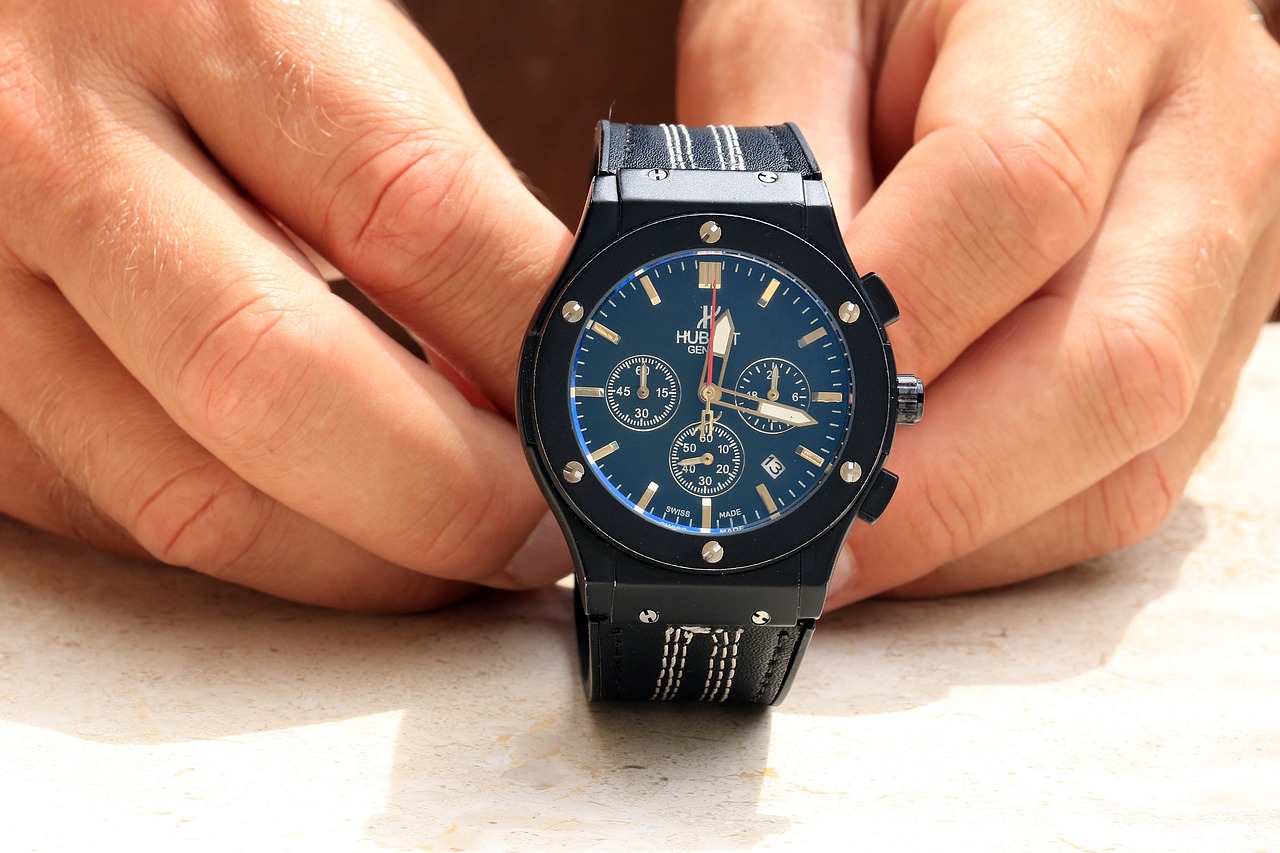Selling expensive jewelry can indeed be a profitable venture, but it also opens the door to potential scams. As the market for high-value items grows, so does the number of fraudsters looking to take advantage of unsuspecting sellers. This article aims to provide you with essential tips and insights to navigate the selling process safely and securely, ensuring that your experience is both rewarding and secure.
Understanding the types of scams prevalent in the jewelry market is crucial. Some of the most common scams include:
- Fake Buyers: Scammers may pose as interested buyers, only to disappear after receiving your jewelry.
- Overpayment Scams: A buyer may send a check for more than the agreed price and ask you to refund the difference.
- Phishing Scams: Fraudsters may attempt to steal your personal information through fake websites or emails.
Identifying trustworthy buyers is key to a successful sale. Look for the following characteristics:
- Established Reputation: Check for online reviews and ratings from previous sellers.
- Clear Communication: A legitimate buyer will communicate professionally and transparently.
- Verification: Always verify the buyer’s identity and credentials before proceeding.
Preparing your jewelry for sale can enhance its value and appeal. Here are some essential steps:
- Getting an Appraisal: A professional appraisal provides an accurate value for your jewelry, helping you set a fair price.
- Cleaning and Presenting Your Jewelry: Properly cleaning and showcasing your jewelry can significantly increase its attractiveness to potential buyers.
Online marketplaces offer a convenient way to sell jewelry, but they come with risks. To sell safely:
- Choose the Right Marketplace: Select platforms that have a good reputation and offer seller protections.
- Communicate Securely: Use secure communication methods to protect your personal information during transactions.
If you suspect you’ve been targeted by a scammer, take immediate action:
- Report the Scam: Inform local authorities and online platforms about fraudulent activities.
- Protect Your Identity: Change passwords and monitor your accounts for any suspicious activity.
Maintaining proper documentation is vital for a safe selling experience. Keep records of:
- Transactions: Documenting each transaction can provide legal protection in case of disputes.
- Provenance and Certification Papers: These documents can enhance your jewelry’s value and provide assurance to buyers.
Consignment shops offer a secure way to sell jewelry. They provide:
- Expertise: Staff at consignment shops can help you price and market your jewelry effectively.
- Reduced Risk: Selling through a reputable shop can minimize the risks associated with direct sales.
By following these guidelines, you can significantly reduce the risk of falling victim to scams while selling your precious jewelry. Always stay vigilant and informed to ensure a safe and profitable selling experience.
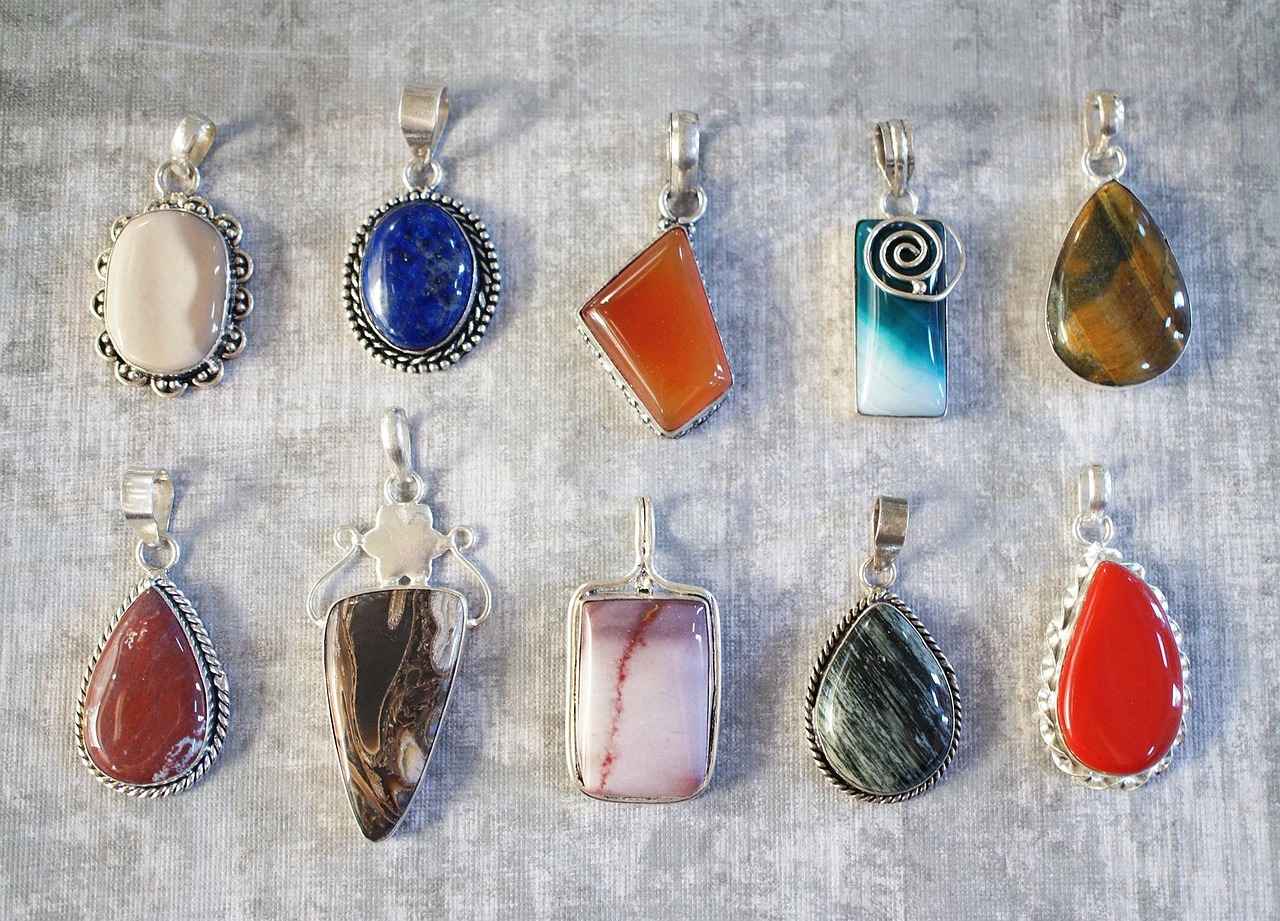
What Are Common Jewelry Selling Scams?
Selling jewelry can be a rewarding venture, but it’s essential to be aware of the potential pitfalls that come with it. Understanding the types of scams prevalent in the jewelry market is crucial for anyone looking to sell their valuable pieces. In this section, we will outline the most common scams that you should watch out for, ensuring that your selling experience is both safe and profitable.
- Fake Appraisals: One of the most common scams involves buyers providing fake appraisals to undervalue your jewelry. They may claim that your piece is worth significantly less than its actual value. Always seek a reputable and certified appraiser before selling.
- Non-Payment Scams: Scammers may express interest in purchasing your jewelry but will attempt to pay with checks or money orders that bounce. Always opt for secure payment methods and verify funds before handing over your items.
- Phishing Scams: Be cautious of unsolicited emails or messages from potential buyers asking for personal information. Scammers may pose as legitimate buyers to steal your identity. Always communicate through secure channels and verify the buyer’s identity.
- Shipping Scams: Some scammers request that you ship your jewelry before payment is secured. This tactic can lead to a loss of your valuable items without receiving any payment. Always ensure that payment is received before shipping any items.
- Trade Scams: Be wary of individuals attempting to trade items instead of providing cash. While some trades may be legitimate, many scammers will offer items that are not worth your jewelry’s value.
To protect yourself from these scams, it is imperative to conduct thorough research on potential buyers. Look for reviews and feedback from previous sellers, and consider using platforms that offer buyer verification services. Additionally, always trust your instincts; if something feels off about a transaction, it’s better to walk away.
In conclusion, being aware of the common scams in the jewelry market can significantly enhance your selling experience. By taking the necessary precautions and staying informed, you can navigate the selling process safely and ensure that your valuable pieces are sold at their true worth.

How to Identify a Legitimate Buyer?
Selling jewelry can be both exciting and daunting, especially when it comes to ensuring that you are dealing with a legitimate buyer. Identifying trustworthy buyers is key to a successful sale. In this section, we will explore the essential characteristics of legitimate buyers and provide practical methods to verify their credibility before proceeding with any transaction.
Understanding the traits of credible buyers can help you avoid scams. Here are some common characteristics:
- Clear Communication: Legitimate buyers are open and transparent in their communication, providing clear details about their intentions and any questions they may have.
- Willingness to Negotiate: Genuine buyers are typically willing to engage in negotiation, showing interest in reaching a fair price.
- Positive Reviews: Trustworthy buyers often have positive feedback from previous transactions, which can be found on various online platforms.
- Professionalism: A legitimate buyer will conduct themselves in a professional manner, respecting your time and property.
Before finalizing any sale, it is crucial to verify the buyer’s credibility. Here are some effective strategies:
- Conduct Background Checks: Utilize online resources to research potential buyers. Websites like Better Business Bureau can provide insights into a buyer’s reputation.
- Request References: A legitimate buyer should be willing to provide references from previous sellers. Contact these references to gauge their experiences.
- Check for Certifications: Verify if the buyer is affiliated with recognized organizations in the jewelry industry. This adds an extra layer of credibility.
- Use Secure Payment Methods: Always opt for secure payment methods to protect your financial information. Options like PayPal or escrow services can offer added security.
Utilizing online platforms can provide valuable insights into buyer reputations. Consider the following resources:
- Online Marketplaces: Platforms like eBay and Etsy often have buyer reviews and ratings that can help you assess potential buyers.
- Social Media Groups: Join jewelry selling groups on Facebook or Reddit where members share their experiences and recommendations.
- Forums and Blogs: Explore forums dedicated to jewelry sales. Many experienced sellers share their insights and tips on identifying trustworthy buyers.
While research and verification are essential, never underestimate the power of your instincts. If something feels off about a buyer, it’s wise to proceed with caution. Trust your gut feelings and consider walking away from a deal that doesn’t sit right with you.
In conclusion, identifying a legitimate buyer is crucial for a successful jewelry sale. By understanding the characteristics of trustworthy buyers and utilizing various resources for verification, you can significantly reduce the risk of falling victim to scams. Always prioritize your safety and take the necessary steps to ensure a smooth and secure transaction.
Researching Potential Buyers
Selling expensive jewelry can be a rewarding venture, but it also invites potential risks, particularly from scammers. One of the most effective ways to safeguard yourself is by conducting thorough research on potential buyers. This section will explore various strategies to investigate buyers, ensuring that your selling experience is secure and profitable.
Understanding the significance of researching potential buyers is essential in the jewelry market. Scammers often create fake profiles or use false identities to lure unsuspecting sellers. By doing your due diligence, you can significantly reduce the risk of falling victim to these scams.
- Online Reviews: Begin by searching for online reviews on platforms such as Google, Yelp, or specialized jewelry forums. Pay attention to both positive and negative feedback. A buyer with numerous positive reviews is typically more trustworthy.
- Social Media Presence: Check the buyer’s social media accounts. A legitimate buyer often has a well-established online presence, showcasing their interests in jewelry and previous purchases.
- Background Checks: Consider using background check services to verify the buyer’s identity. This can provide you with essential information about their history and credibility.
- Ask for References: A reputable buyer should have no problem providing references. Reach out to previous sellers to gain insights into their experiences.
In today’s digital age, numerous online resources can aid in your research. Websites dedicated to jewelry sales often feature buyer reviews and ratings. Forums where sellers share their experiences can also be invaluable. Engage with these communities to gather information about potential buyers and their reputations.
Before proceeding with any transaction, ensure that the buyer has the necessary credentials. Look for certifications from recognized organizations, which can validate their legitimacy. Buyers who are members of reputable associations are often more trustworthy.
Once you have narrowed down potential buyers, effective communication becomes paramount. Use secure methods to communicate, such as encrypted messaging apps. Be cautious about sharing personal information until you are confident in the buyer’s legitimacy.
While researching potential buyers, be vigilant for red flags. Unusual payment requests, pressure to complete the transaction quickly, or reluctance to provide personal information are all signs of a potential scam. Trust your instincts; if something feels off, it’s better to err on the side of caution.
Conducting thorough research on potential buyers is an essential step in selling expensive jewelry. By utilizing online resources, checking credentials, and maintaining open communication, you can significantly reduce the risk of scams. Remember, taking the time to investigate can lead to a successful and secure selling experience.
Using Online Resources
Selling expensive jewelry can be a rewarding venture, but it also comes with its challenges, especially when it comes to ensuring the legitimacy of potential buyers. One of the most effective ways to safeguard yourself is by utilizing online resources to gain insights into buyer reputations. This section will explore various platforms and methods to help you navigate the jewelry selling landscape safely.
In today’s digital age, information is readily available at our fingertips. Online resources provide a wealth of information about potential buyers, allowing sellers to make informed decisions. By leveraging these platforms, you can:
- Assess Buyer Credibility: Check reviews and feedback from previous transactions.
- Identify Red Flags: Spot common signs of scams or fraudulent behavior.
- Engage with the Community: Participate in forums to share experiences and gather advice.
There are numerous websites and forums dedicated to jewelry sales that can provide valuable insights into buyer reputations. Consider the following:
- Marketplaces: Platforms like eBay and Etsy often have buyer ratings and reviews that can help you gauge trustworthiness.
- Specialized Jewelry Forums: Websites like PriceScope or The Knot feature discussions where sellers share their experiences with specific buyers.
- Social Media Groups: Facebook groups dedicated to jewelry sales can be excellent resources for real-time feedback and recommendations.
When exploring online reviews, it’s crucial to approach them with a critical eye. Here are some tips:
1. Look for patterns in feedback: Multiple reports of similar issues can indicate a problem.2. Check the date of reviews: Ensure the feedback is recent to reflect the current standing of the buyer.3. Analyze both positive and negative reviews: Understanding both sides can give you a balanced view of the buyer.
Joining jewelry-related forums or social media groups can provide you with firsthand insights from other sellers. Here’s how to make the most of these communities:
- Ask Questions: Don’t hesitate to inquire about specific buyers to gather opinions.
- Share Your Experiences: Contributing your own experiences can help others and foster a supportive environment.
- Stay Active: Regular participation can keep you updated on trends, scams, and trustworthy buyers.
Utilizing online resources is an invaluable strategy when selling expensive jewelry. By taking the time to research potential buyers through reviews, forums, and community engagement, you can significantly reduce the risk of falling victim to scams. Remember, the more informed you are, the safer and more successful your selling experience will be.
Checking Credentials and Certifications
When engaging in the sale of expensive jewelry, ensuring that you are dealing with a legitimate buyer is of utmost importance. One of the most effective ways to achieve this is by . This process not only safeguards your interests but also enhances the overall integrity of the transaction.
In today’s digital age, scammers are becoming increasingly sophisticated, making it essential for sellers to be vigilant. Why is it crucial to verify a buyer’s credentials? The answer lies in the potential risks involved. A buyer without proper credentials may pose a threat to your financial security and could result in lost assets.
When assessing a buyer’s legitimacy, consider the following key credentials:
- Membership in Recognized Organizations: Buyers affiliated with reputable industry organizations often have to adhere to strict ethical standards.
- Certifications: Look for certifications from recognized gemological institutes, which can indicate a serious commitment to the jewelry trade.
- Business Licenses: A legitimate buyer should possess the necessary licenses to operate legally within their jurisdiction.
To ensure that the buyer’s credentials are valid, employ the following strategies:
- Research Online: Utilize search engines and social media platforms to check for reviews or testimonials about the buyer.
- Contact Organizations: If the buyer claims membership in a professional organization, reach out to that organization to verify their status.
- Request Documentation: Do not hesitate to ask potential buyers for proof of their credentials, such as certificates or licenses.
Certifications serve as a testament to a buyer’s expertise and professionalism. They are often awarded after rigorous training and adherence to industry standards. How does this impact your transaction? A certified buyer is more likely to engage in fair negotiations and uphold ethical practices, reducing the likelihood of disputes.
Establishing trust is vital in any business transaction. By verifying a buyer’s credentials, you are not only protecting yourself but also fostering a transparent relationship. How can transparency benefit both parties? It encourages open communication and can lead to a smoother transaction process, ultimately enhancing the selling experience.
In conclusion, taking the time to verify a buyer’s credentials and certifications is a critical step in the jewelry selling process. By following the outlined strategies and understanding the importance of these checks, you can significantly reduce the risks associated with selling expensive jewelry. Always remember that a cautious approach today can lead to a successful and secure sale tomorrow.
Utilizing Secure Payment Methods
When it comes to selling expensive jewelry, choosing secure payment methods is not just a precaution; it is a vital step in protecting your finances. The jewelry market can be rife with potential scams, and ensuring that you receive your payment safely is paramount. This section will delve into the safest payment options to consider, offering you peace of mind while engaging in transactions.
Understanding the various payment methods available can help you make informed decisions. Below are some of the most secure options:
- Escrow Services: Utilizing an escrow service can be one of the safest ways to handle transactions. This method involves a third party that holds the buyer’s payment until the jewelry is delivered and verified. Only then is the payment released to the seller.
- Bank Wire Transfers: A bank wire transfer is a direct way to send money from one bank account to another. This method is secure and typically irreversible, making it a reliable choice for large transactions.
- PayPal: PayPal offers buyer and seller protections, making it a popular choice for online transactions. Ensure that you receive payment as a ‘goods and services’ transaction for added security.
- Credit Card Payments: Accepting credit card payments can provide additional security. Credit card companies often have built-in fraud protection, which can safeguard both the buyer and seller.
While cash may seem like a straightforward option, it can pose significant risks. Here are a few reasons to avoid cash transactions:
- No Transaction Record: Cash transactions leave no paper trail, making it difficult to prove the sale or resolve disputes later.
- Higher Risk of Theft: Carrying large sums of cash can make you a target for theft, particularly when dealing with high-value items like jewelry.
- Instantaneous Payment Issues: Once cash is exchanged, there is no recourse if the buyer turns out to be fraudulent.
Choosing the right payment method is only part of the equation. Here are some additional tips to ensure your payment process is secure:
- Verify Buyer Information: Before finalizing any transaction, verify the buyer’s identity and their payment method. Conduct background checks or request references if necessary.
- Use Secure Platforms: If selling online, use reputable platforms that offer secure payment options and have buyer protection policies in place.
- Stay Informed: Keep yourself updated on the latest scams and fraudulent activities in the jewelry market. Knowledge is your best defense.
In conclusion, the safety of your financial transactions when selling expensive jewelry is paramount. By choosing secure payment methods such as escrow services, bank wire transfers, and reputable online payment platforms, you can significantly reduce the risk of falling victim to scams. Always prioritize security and conduct thorough verification of potential buyers to ensure a smooth and safe selling experience.
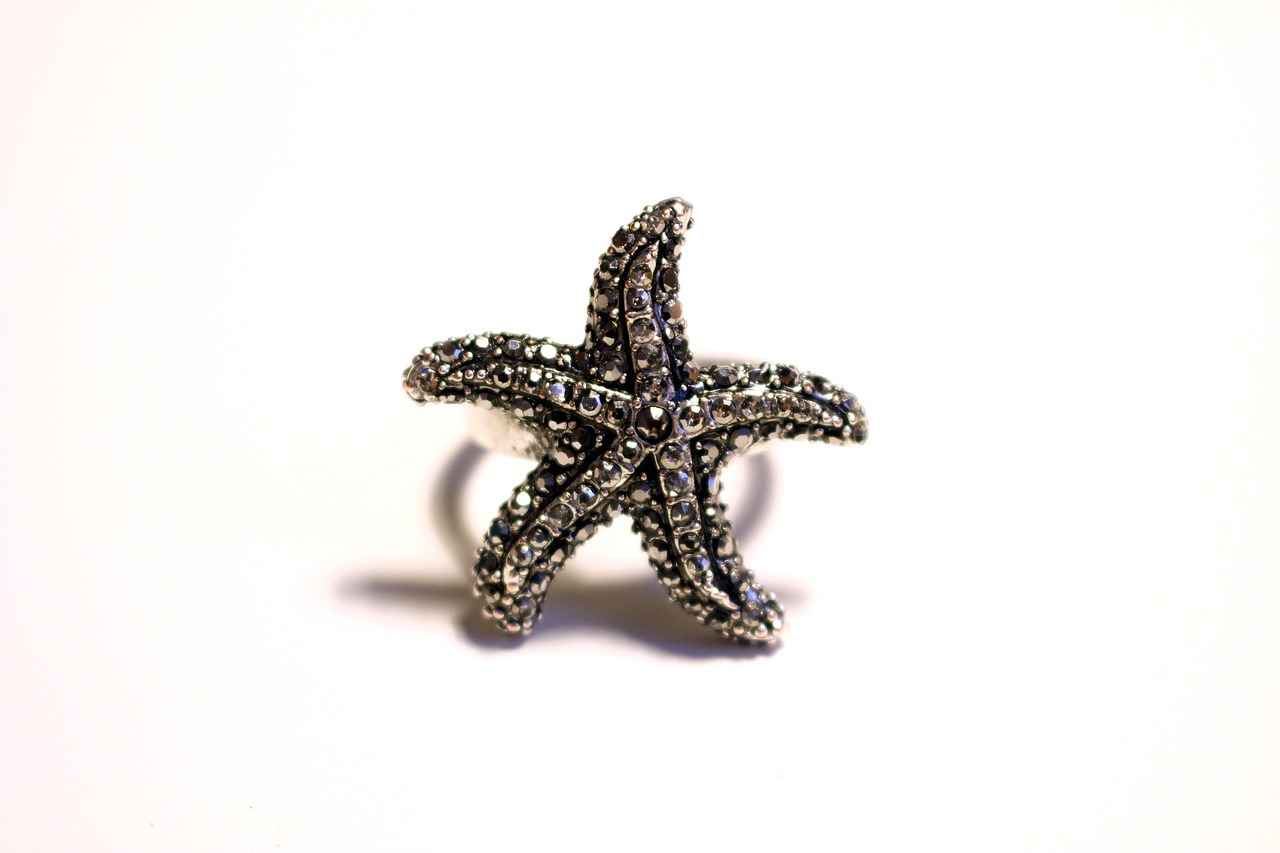
What Steps Should You Take Before Selling?
When it comes to selling your jewelry, preparation is key. Taking the right steps before listing your items can significantly enhance their value and appeal. This section outlines essential actions to ensure a smooth selling process, enabling you to attract potential buyers effectively.
Preparing your jewelry for sale not only increases its attractiveness but also boosts your chances of securing a better price. Buyers are more inclined to purchase items that are well-presented and properly documented. Here are the steps you should consider:
One of the first steps you should take is to obtain a professional appraisal. An appraisal provides an accurate assessment of your jewelry’s value based on various factors such as materials, craftsmanship, and market trends. Why is this important? Understanding the true value of your pieces enables you to negotiate confidently and avoid underpricing your items.
First impressions matter, especially when selling jewelry. Properly cleaning your pieces can make a significant difference in how they are perceived. Here are some tips:
- Use a gentle cleaner: Avoid harsh chemicals that could damage your jewelry.
- Polish metals: Use a soft cloth to bring out the shine in gold, silver, or platinum.
- Check stones: Ensure that all stones are secure and clean any dirt or debris.
Once cleaned, consider how you will present your jewelry. Using quality photography and appealing displays can attract more buyers. Natural lighting and neutral backgrounds work wonders in showcasing your items.
Maintaining proper documentation is vital in the selling process. Buyers often look for proof of authenticity and value. Consider the following documentation:
- Appraisal certificates: These provide credibility to your pricing.
- Receipts: Original purchase receipts can help establish provenance.
- Certification papers: For gemstones, having certification from recognized organizations can significantly enhance value.
Once your jewelry is prepared, the next step is to choose the right platform to sell it. Whether you opt for online marketplaces, auction houses, or consignment shops, ensure that you select a reputable venue. Research the platform’s policies, fees, and buyer demographics to find the best fit for your items.
Effective marketing can make a difference in attracting potential buyers. Utilize social media platforms, jewelry forums, and online marketplaces to showcase your pieces. Engaging descriptions and high-quality images can help your listings stand out. Don’t forget to highlight unique features and any historical significance your items may have.
By taking the time to prepare your jewelry properly, you set the foundation for a successful sale. From obtaining an appraisal to cleaning and documenting your pieces, each step is crucial in enhancing value and appeal. Remember, a well-prepared item not only attracts buyers but also instills confidence in your selling process.
Getting an Appraisal
When it comes to selling your jewelry, obtaining a professional appraisal is one of the most important steps you can take. An appraisal not only provides you with an accurate value for your pieces but also equips you with the knowledge necessary to negotiate better prices. Let’s delve into the benefits of getting a professional appraisal and how it can empower you in the selling process.
A professional appraisal serves as a comprehensive evaluation of your jewelry’s worth. This process is conducted by certified appraisers who consider various factors such as gem quality, metal purity, and market trends. Here are some key reasons why obtaining an appraisal is crucial:
- Accurate Valuation: An appraisal provides a detailed report that reflects the current market value of your jewelry, ensuring you are not underpricing your items.
- Negotiation Power: With a professional appraisal in hand, you can confidently negotiate prices with potential buyers, knowing the true worth of your jewelry.
- Insurance Purposes: An appraisal is often required by insurance companies to cover your jewelry against theft or damage, protecting your investment.
- Documentation: Having a documented appraisal adds credibility to your sale, making it easier to attract serious buyers.
When it comes to negotiating, knowledge is power. A professional appraisal arms you with valuable insights into your jewelry’s worth, enabling you to approach potential buyers with confidence. Here’s how:
- Understanding Market Value: Knowing the market value helps you set realistic expectations and avoid lowball offers.
- Highlighting Unique Features: An appraisal highlights the unique characteristics of your jewelry, allowing you to emphasize these aspects during negotiations.
- Establishing Trust: Providing potential buyers with an appraisal report demonstrates your commitment to transparency, fostering trust in the transaction.
The appraisal process typically involves several steps. Understanding what to expect can help you prepare:
- Initial Consultation: You will meet with the appraiser to discuss your jewelry and any specific concerns you may have.
- Evaluation: The appraiser examines your jewelry using specialized tools to assess its quality and value.
- Report Generation: After the evaluation, a detailed report will be generated, outlining the appraised value and the factors that influenced it.
Finding a qualified appraiser is essential for obtaining a reliable appraisal. Here are some tips:
- Look for Credentials: Ensure the appraiser is certified by a recognized organization, such as the American Society of Appraisers (ASA) or the National Association of Jewelry Appraisers (NAJA).
- Check Reviews: Research online reviews and testimonials to gauge the appraiser’s reputation and reliability.
- Ask for Recommendations: Seek referrals from friends, family, or local jewelers who may have experience with appraisers.
In conclusion, obtaining a professional appraisal is a vital step in the jewelry selling process. It not only provides an accurate value for your pieces but also empowers you with the knowledge and confidence to negotiate better prices. By understanding the appraisal process and finding a qualified appraiser, you can ensure a successful and profitable sale of your valuable jewelry.
Cleaning and Presenting Your Jewelry
When it comes to selling jewelry, first impressions matter. Properly cleaning and presenting your jewelry can make a significant difference in attracting potential buyers. In this section, we will explore effective tips on how to showcase your pieces to enhance their appeal and value.
Cleaning your jewelry not only improves its appearance but also highlights its quality. Dirty or tarnished pieces can give the impression of neglect, making buyers hesitant to invest. Regular cleaning helps maintain the integrity of your jewelry and ensures that it sparkles, drawing attention to its unique features.
- Gold and Silver: Use a gentle soap solution and a soft cloth to remove dirt. Avoid harsh chemicals that can damage the metal.
- Gemstones: Clean with lukewarm water and a soft brush. For delicate stones, consult a professional cleaner to avoid damage.
- Pearls: Wipe with a damp cloth after wearing to remove oils and dirt. Store them in a soft pouch to prevent scratches.
Once your jewelry is clean, the next step is to present it in a way that captivates buyers. Here are some essential tips:
- Use Quality Display Materials: Invest in elegant display boxes or stands that complement your jewelry. A well-presented piece can significantly enhance perceived value.
- Consider Lighting: Natural light is ideal for showcasing jewelry. If selling online, ensure your photographs are taken in bright, diffused light to highlight the details.
- Styling: Consider how the jewelry is styled. Pair pieces together or create a themed display to entice buyers and showcase versatility.
In the digital age, high-quality photographs are crucial. Here are some tips to ensure your jewelry shines in online listings:
- Multiple Angles: Take photos from various angles to provide a comprehensive view of the piece.
- Close-ups: Capture intricate details and textures to show the craftsmanship.
- Contextual Images: Include images of the jewelry being worn to give buyers a sense of scale and style.
When listing your jewelry, descriptive language can make a significant impact. Highlight the materials, craftsmanship, and any unique features. Use terms such as “handcrafted,” “vintage,” or “one-of-a-kind” to attract buyers looking for something special.
Buyers are often drawn to the stories behind pieces. Share the inspiration or history of your jewelry to create an emotional connection. This can make your pieces more appealing and encourage buyers to make a purchase.
In summary, effectively can significantly enhance its attractiveness to potential buyers. By employing the right cleaning techniques, using quality display methods, and crafting compelling narratives, you can create a presentation that not only showcases the beauty of your jewelry but also increases its perceived value.

How to Use Online Marketplaces Safely?
In today’s digital age, selling jewelry through online marketplaces has become increasingly popular. These platforms offer a convenient way to reach a global audience, but they also present certain risks. To ensure a safe and successful selling experience, it is crucial to follow best practices that protect both your jewelry and your personal information. Below are essential tips on how to use online marketplaces safely.
Not all online marketplaces are created equal. When selecting a platform to sell your jewelry, consider the following:
- Reputation: Research the marketplace’s reputation by reading reviews and testimonials from other sellers.
- Security Features: Ensure the platform has robust security measures in place, such as buyer verification and secure payment options.
- Fees and Policies: Understand the fee structure and return policies of the marketplace to avoid unexpected costs.
Effective communication with potential buyers is essential to prevent misunderstandings and protect your personal information. Here are some tips:
- Use the Platform’s Messaging System: Always communicate through the marketplace’s internal messaging system rather than sharing personal email addresses or phone numbers.
- Be Cautious with Personal Information: Avoid sharing sensitive details such as your home address or financial information until a transaction is finalized.
- Document Conversations: Keep records of all conversations with buyers for reference in case of disputes.
Before listing your jewelry, it’s important to set clear terms and conditions for the sale:
- Payment Methods: Specify which payment methods you accept and ensure they are secure. Options like PayPal or escrow services can provide additional protection.
- Shipping Policies: Clearly outline your shipping policies, including costs, delivery times, and who bears the risk during transit.
- Return Policy: Establish a fair return policy that protects you as a seller while providing buyers with reassurance.
To attract buyers while safeguarding your jewelry’s value, consider the following:
- High-Quality Photos: Use clear, high-resolution images that showcase your jewelry from multiple angles. Good lighting and a neutral background can enhance the appeal.
- Accurate Descriptions: Provide detailed descriptions that include materials, dimensions, and any unique features. Transparency helps build trust with potential buyers.
- Professional Appraisal: If possible, obtain a professional appraisal to establish your jewelry’s value and help justify your asking price.
After listing your jewelry, actively monitor the transaction process:
- Track Shipments: Use tracking services to monitor the shipment of your jewelry, ensuring it reaches the buyer safely.
- Request Feedback: Encourage buyers to leave feedback after the transaction. Positive reviews can enhance your credibility and attract future buyers.
- Address Issues Promptly: If any issues arise during the transaction, address them promptly to maintain a good relationship with the buyer and resolve disputes amicably.
By following these best practices, you can navigate online marketplaces safely and effectively, minimizing risks while maximizing your selling potential. Remember, being informed and proactive is key to a successful jewelry selling experience.
Choosing the Right Marketplace
When it comes to selling expensive jewelry, can significantly impact your success and safety. With numerous platforms available, it’s essential to evaluate each option carefully to ensure it aligns with your selling goals and offers the necessary safety features. Here are some key considerations to guide you in selecting the best online marketplace for your jewelry sales.
- Security Measures: Ensure the platform has robust security features, such as encryption and buyer verification processes, to protect your personal information and financial transactions.
- User Reviews: Look for marketplaces with positive user feedback. Reviews can provide insights into the experiences of other sellers and help you gauge the platform’s reliability.
- Fees and Commissions: Understand the fee structure of the marketplace. Some platforms charge high commissions, which can eat into your profits. Choose one with transparent pricing.
- Customer Support: A responsive customer support team is crucial for resolving issues quickly. Check if the platform offers multiple support channels like chat, email, or phone.
Before committing to a marketplace, conduct thorough research to assess its reputation. Here are some steps you can take:
- Check Online Forums: Visit jewelry selling forums and communities to gather opinions about various marketplaces. Engaging with experienced sellers can provide valuable insights.
- Look for Certifications: Some marketplaces are affiliated with professional organizations in the jewelry industry. This affiliation can be a good indicator of their credibility.
- Review Policies: Carefully read the marketplace’s policies regarding returns, disputes, and seller protections. A transparent policy can help you understand your rights as a seller.
Several online marketplaces cater specifically to jewelry sales. Here are a few popular options:
- eBay: A well-known platform with a vast audience. eBay offers seller protections and various listing options, making it suitable for different selling strategies.
- Etsy: Ideal for handmade or vintage jewelry. Etsy has a dedicated community of buyers looking for unique pieces, which can be beneficial for niche sellers.
- Chrono24: A marketplace tailored for luxury watches and jewelry. Chrono24 provides an international platform with a focus on high-end items.
- Ruby Lane: This platform specializes in antiques and vintage collectibles, including jewelry. It attracts a specific audience that appreciates unique and vintage items.
Once you’ve selected the right marketplace, consider these tips to maximize your selling experience:
- Optimize Your Listings: Use high-quality images and detailed descriptions. Highlight the unique features of your jewelry to attract potential buyers.
- Engage with Buyers: Respond promptly to inquiries and maintain a professional tone. Good communication can build trust and encourage sales.
- Promote Your Listings: Utilize social media and other marketing channels to drive traffic to your listings. The more visibility your jewelry gets, the higher the chances of a sale.
By carefully selecting the right marketplace and employing effective selling strategies, you can enhance your chances of a successful and secure jewelry sale. Whether you’re a seasoned seller or new to the market, these tips will help you navigate the online jewelry selling landscape with confidence.
Communicating Securely with Buyers
When it comes to selling expensive jewelry, effective communication with buyers is essential. Not only does it facilitate a smooth transaction, but it also plays a crucial role in preventing misunderstandings that could lead to disputes or even scams. In this section, we will explore secure communication methods that help protect your personal information during transactions.
In the digital age, where transactions often occur online, it’s vital to ensure that your communication with buyers is secure. Scammers can exploit vulnerabilities in communication channels to gain access to your personal information, which could lead to identity theft or financial loss. By utilizing secure communication methods, you not only protect yourself but also enhance your credibility as a seller.
- Use Encrypted Messaging Platforms: Opt for messaging services that offer end-to-end encryption. Platforms like Signal or WhatsApp ensure that only you and the recipient can read the messages.
- Avoid Sharing Personal Information: Be cautious about sharing sensitive data such as your home address, phone number, or financial details until you have verified the buyer’s legitimacy.
- Utilize Secure Email Services: If you need to communicate via email, consider using secure email services that prioritize privacy, such as ProtonMail.
- Verify Buyer Identity: Before engaging in detailed discussions, ensure that you have verified the buyer’s identity through their social media profiles or other online presence.
While it’s important to be cautious, maintaining a professional demeanor in your communications can facilitate a positive buyer experience. Here are some tips:
- Be Clear and Concise: Ensure your messages are straightforward to avoid misunderstandings.
- Set Expectations: Clearly outline the terms of the transaction, including payment methods and shipping details, to prevent confusion later.
- Document Conversations: Keep records of your communications. This can serve as evidence in case of disputes.
Many online marketplaces offer built-in communication tools that are designed with security in mind. Using these platforms can add an extra layer of protection:
- Integrated Messaging Systems: Platforms like Etsy or eBay provide secure messaging options that keep your personal information private.
- Transaction Histories: These platforms often maintain logs of your conversations and transactions, which can be helpful for resolving any issues that arise.
In conclusion, adopting secure communication methods when selling expensive jewelry is not just a precaution; it is a necessity. By implementing these best practices, you can significantly reduce the risk of misunderstandings and fraud, ensuring a safer and more successful selling experience.

What to Do If You Encounter a Scam?
Encountering a scam can be a distressing experience, especially when it involves valuable items such as jewelry. Understanding what steps to take can significantly mitigate potential losses and protect your interests. This section outlines essential actions to consider if you suspect you’ve fallen victim to a scam.
If you believe you have encountered a scam, it is crucial to act quickly. Here are some important steps to follow:
- Stay Calm: Panic can lead to hasty decisions. Take a moment to collect your thoughts and assess the situation.
- Document Everything: Keep a detailed record of all communications, transactions, and any other relevant information. This documentation can be invaluable if you need to report the scam.
- Cease Communication: If you suspect a scam, immediately stop all communication with the suspected scammer. Continuing to engage can expose you to further risks.
Reporting scams is vital not only for your protection but also for safeguarding others from potential fraud. Here’s how to do it:
- Contact Local Authorities: Reach out to your local police department to file a report. Provide them with all the documented evidence you have gathered.
- Notify Consumer Protection Agencies: Report the scam to organizations like the Federal Trade Commission (FTC) or your country’s consumer protection agency. They can help investigate and take action against scammers.
- Inform Online Platforms: If the scam occurred through an online marketplace or social media, report the user or listing to the platform. They often have measures in place to handle fraudulent activity.
After encountering a scam, it’s crucial to take steps to secure your personal and financial information:
- Change Passwords: Update passwords for your online accounts, especially those linked to financial information. Use strong, unique passwords for each account.
- Monitor Financial Statements: Keep a close eye on your bank and credit card statements for any unauthorized transactions. Report any suspicious activity immediately.
- Consider Credit Monitoring: Enroll in a credit monitoring service to alert you to any changes in your credit report, which may indicate identity theft.
Several resources can provide assistance and guidance if you find yourself a victim of a scam:
- National Fraud Information Center: This organization offers resources and advice for victims of fraud.
- Identity Theft Resource Center: If you suspect your identity has been stolen, this center provides support and steps to recover your identity.
- Legal Aid Services: If you have incurred significant losses, consider consulting with a legal professional who specializes in fraud cases for guidance on your options.
In summary, knowing how to respond to a scam is essential for protecting yourself and your assets. By staying calm, documenting your experience, reporting the scam, and taking proactive steps to secure your identity and finances, you can mitigate the impact of such unfortunate situations. Remember, vigilance and prompt action are your best defenses against fraud.
Reporting the Scam
Reporting scams is a vital action that not only helps you but also protects others in your community. When you encounter fraudulent activities, taking the time to report them can prevent further victimization and contribute to a safer environment for everyone. Understanding the proper channels for reporting scams is essential for effective action.
When scams go unreported, they can proliferate, targeting more unsuspecting individuals. By reporting scams, you play a crucial role in:
- Raising Awareness: Your report can alert authorities and the public about emerging scams.
- Assisting Investigations: Reporting provides law enforcement with valuable information that can lead to investigations and arrests.
- Preventing Future Scams: Authorities can use reported scams to develop better prevention strategies and resources.
Reporting a scam involves several steps to ensure that your information is correctly submitted and processed:
- Document the Details: Before reporting, gather all relevant information about the scam, including dates, times, names, and any communication you had with the scammer.
- Contact the Authorities: Depending on the nature of the scam, you may need to report it to different organizations. Here are some key contacts:
- Local Police Department: For scams that involve theft or fraud.
- Federal Trade Commission (FTC): For consumer fraud and identity theft. You can report online at reportfraud.ftc.gov.
- Internet Crime Complaint Center (IC3): For scams conducted online, visit ic3.gov.
- Your Bank or Credit Card Company: If you provided financial information, notify your bank immediately.
- Follow Up: After reporting, keep track of your case number and any correspondence with the authorities. Following up can help ensure your case is being handled.
When reporting a scam, it’s important to provide as much information as possible. This includes:
- Detailed Description: Explain what happened, how you were approached, and any tactics used by the scammer.
- Evidence: Attach any screenshots, emails, or other documentation that supports your claim.
- Personal Impact: Share how the scam affected you, including any financial losses or emotional distress.
Once you report a scam, authorities will review the information and determine the appropriate course of action. This may involve:
- Investigation: Law enforcement may investigate the scam and attempt to identify the perpetrators.
- Public Alerts: Authorities may issue warnings or alerts to the public to prevent others from falling victim to the same scam.
- Support Services: Some organizations offer support services for victims of scams, providing guidance on recovery and prevention.
In conclusion, reporting scams is a critical step in safeguarding both yourself and your community. By taking action, you contribute to a collective effort to combat fraud and protect others from similar experiences.
Protecting Your Identity and Finances
In today’s digital age, protecting your identity and finances is more important than ever, especially after encountering a scam. Scammers are becoming increasingly sophisticated, making it essential for individuals to take immediate action to safeguard their personal and financial information. In this section, we will explore essential steps you can take to secure your identity and minimize the risk of further harm.
- Change Your Passwords: After a scam, it’s crucial to update your passwords for online accounts. Use a mix of letters, numbers, and special characters to create strong passwords. Consider using a password manager to keep track of your credentials securely.
- Monitor Your Financial Accounts: Regularly check your bank and credit card statements for any unauthorized transactions. Report any suspicious activity to your financial institution immediately.
- Place a Fraud Alert: Contact one of the major credit bureaus—Equifax, Experian, or TransUnion—to place a fraud alert on your credit report. This action makes it harder for identity thieves to open accounts in your name.
- Consider a Credit Freeze: A credit freeze prevents new creditors from accessing your credit report, making it difficult for scammers to open new accounts in your name. You can lift the freeze when you need to apply for credit.
- Review Your Credit Report: Obtain a free copy of your credit report from AnnualCreditReport.com. Review it carefully for any unfamiliar accounts or inquiries and dispute any inaccuracies you find.
- Notify Your Bank: If you suspect that your bank account information has been compromised, notify your bank immediately. They can monitor your account for suspicious activity and may provide additional security measures.
- Use Identity Theft Protection Services: Consider enrolling in an identity theft protection service that monitors your personal information and alerts you to potential threats. These services can help you recover if your identity is stolen.
In addition to these steps, it’s essential to remain vigilant and educate yourself about common scams. Knowledge is your best defense against fraud. Stay informed about the latest scams and tactics used by criminals, and share this information with friends and family to help protect them as well.
Finally, remember that taking swift action can significantly reduce the impact of a scam on your life. By implementing these protective measures, you can regain control over your identity and finances, ensuring that you are better prepared to face any future threats.
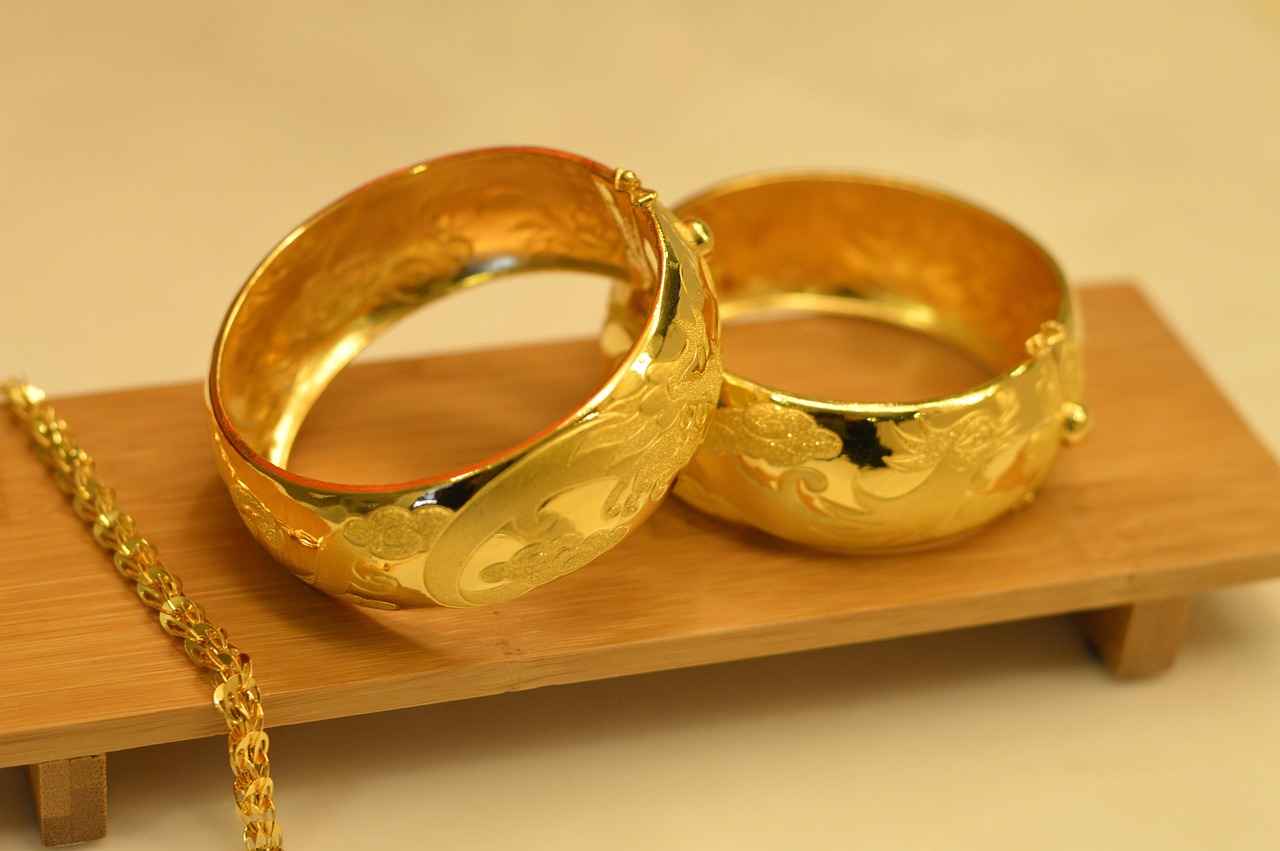
Why Is Documentation Important When Selling Jewelry?
When it comes to selling jewelry, maintaining proper documentation is not just a good practice; it is vital for ensuring a safe and secure selling experience. This section delves into the importance of keeping accurate records and receipts throughout the selling process, highlighting how documentation can protect you and enhance your transaction.
Documentation encompasses a variety of records that can significantly impact your selling journey. Here are some essential types of documentation to maintain:
- Receipts: Keep all original purchase receipts as they serve as proof of ownership and authenticity.
- Appraisal Reports: Professional appraisals provide a documented value of your jewelry, which can be crucial for negotiations.
- Certificates of Authenticity: If your jewelry comes with a certification, retain these documents as they add credibility to your sale.
- Transaction Records: Document every sale, including buyer information and payment methods, to protect yourself in case of disputes.
Maintaining thorough documentation can safeguard you in several ways:
- Legal Protection: In the event of a dispute, having documented proof can serve as evidence in your favor.
- Value Verification: Appraisals and certificates can help justify your asking price, making it easier to negotiate with potential buyers.
- Fraud Prevention: Keeping records of transactions helps you track your sales and identify any suspicious activities.
Provenance records trace the history of your jewelry, establishing its authenticity and value. Here are some benefits:
- Increased Value: Jewelry with a documented history often commands higher prices in the market.
- Buyer Confidence: Buyers are more likely to purchase pieces with clear provenance, knowing they are investing in genuine items.
- Marketability: Provenance can make your jewelry more appealing, especially to collectors and connoisseurs.
Proper organization is key to managing your documentation. Here are some practical tips:
- Create a Filing System: Use physical or digital folders to categorize your documents based on type (e.g., receipts, appraisals, certifications).
- Regular Updates: After each transaction, promptly update your records to ensure accuracy and completeness.
- Backup Important Documents: Keep digital copies of essential papers in a secure location to prevent loss.
In conclusion, maintaining proper documentation while selling jewelry is essential for a safe and successful experience. By keeping accurate records, you not only protect yourself legally but also enhance the value of your pieces and build trust with potential buyers. Whether it’s receipts, appraisals, or provenance papers, thorough documentation is a crucial aspect of the selling process that should never be overlooked.
Keeping Records of Transactions
When engaging in the sale of expensive jewelry, keeping detailed records of each transaction is not just a good practice; it is a necessary step for legal protection. In a world where disputes can arise unexpectedly, having a comprehensive record can serve as your best defense. This section will delve into the types of records you should maintain and the numerous benefits they can provide in case of any disputes.
To ensure you are well-prepared, consider maintaining the following types of records:
- Receipts: Always keep receipts for every transaction, whether you are purchasing or selling jewelry. These documents serve as proof of payment and can clarify any misunderstandings.
- Appraisal Documents: If your jewelry has been appraised, keep the appraisal documents. They provide a professional valuation, which can be crucial during negotiations.
- Communication Records: Document all communications with buyers or sellers, including emails, messages, and notes from phone calls. This will help you recall important details and agreements.
- Photos of Jewelry: Take high-quality photos of your jewelry before and after the transaction. This visual documentation can help establish the condition and authenticity of the pieces.
- Consignment Agreements: If you are selling through a consignment shop, retain a copy of the consignment agreement. This outlines the terms of your sale and protects your interests.
Maintaining these records offers several advantages:
- Legal Protection: In the event of a dispute, having documented proof can help you defend your position. Whether it’s a disagreement over the sale price or the condition of the jewelry, your records can provide clarity.
- Enhanced Credibility: Buyers are more likely to trust sellers who can provide documentation. It demonstrates professionalism and transparency, making it easier to build a trusting relationship.
- Tax Purposes: Keeping detailed records can also help during tax season. If you sell jewelry, you may need to report income, and having accurate records simplifies this process.
- Future Transactions: Your records can serve as a reference for future sales. Knowing the history of your jewelry can help you make informed decisions and set appropriate prices.
To make the most out of your documentation efforts, consider the following best practices:
- Use Digital Tools: Utilize apps or software designed for record-keeping. These tools can help you organize your documents efficiently and access them easily.
- Back Up Your Records: Always have a backup of your documents, whether in physical form or stored in the cloud. This ensures that you do not lose important information in case of unforeseen events.
- Review Regularly: Periodically review your records to ensure they are up-to-date and accurate. This can help you identify any discrepancies early on.
In summary, keeping thorough records of your jewelry transactions is essential for protecting yourself legally and enhancing your credibility as a seller. By documenting every aspect of your transactions, you not only safeguard your interests but also facilitate smoother interactions with buyers and sellers alike.
Provenance and Certification Papers
When selling jewelry, the importance of provenance and certification papers cannot be overstated. These documents not only enhance the value of your pieces but also serve as a form of protection against potential scams. Understanding how to obtain and present these essential documents can significantly impact your selling experience.
Provenance refers to the history of ownership of a piece of jewelry. It provides potential buyers with a narrative about the item, including its origin, previous owners, and any notable events associated with it. Having a well-documented provenance can greatly increase the appeal of your jewelry, as it adds a layer of authenticity and uniqueness.
Certification papers are documents provided by professional appraisers or gemological laboratories that verify the quality and authenticity of gemstones and jewelry pieces. These papers often include details about the materials used, such as the type of metal, gemstone quality, and any treatments the stones may have undergone. Buyers are more likely to trust and invest in jewelry that comes with reputable certification.
- Research Your Jewelry’s History: Start by gathering any available information about your jewelry. This may include receipts, previous appraisals, or any documentation from previous owners.
- Consult Experts: Reach out to certified appraisers or gemologists who can provide you with the necessary certification papers. Make sure they are accredited by recognized organizations.
- Utilize Online Resources: There are various online platforms where you can find information about your jewelry’s history and even connect with professionals who can assist in obtaining certification.
When selling your jewelry, it’s crucial to present these documents in a clear and organized manner. Here are some tips:
- Keep Documents Together: Create a folder that includes all relevant documents. This makes it easy for potential buyers to review.
- Highlight Key Information: When presenting your jewelry, point out specific details in the certification papers that enhance the item’s value, such as gemstone quality or unique features.
- Be Prepared to Answer Questions: Buyers may have queries regarding the provenance or certification. Familiarize yourself with the details to provide confident answers.
Having provenance and certification papers can significantly enhance your jewelry’s market value. Buyers are often willing to pay a premium for items with documented histories and verified authenticity. This is particularly true for high-value pieces, such as vintage or designer jewelry, where the story behind the item can be just as important as the item itself.
Yes, the absence of provenance and certification papers can hinder your ability to sell your jewelry effectively. Potential buyers may view items without documentation as less trustworthy, leading to lower offers or even a complete lack of interest. Therefore, investing time and resources into obtaining these documents is essential for maximizing your selling potential.
In summary, having provenance and certification papers is vital when selling jewelry. These documents not only enhance the value of your pieces but also build trust with potential buyers, making your selling experience smoother and more profitable.

What Are the Benefits of Selling Through a Consignment Shop?
When considering the sale of your jewelry, consignment shops can provide a secure and effective avenue. This method not only offers peace of mind but also helps maximize the value of your pieces. In this section, we will delve into the benefits of selling through a consignment shop and outline what you can expect throughout the process.
Consignment shops specialize in selling items on behalf of the owner, allowing you to benefit from their expertise and customer base. Here are some key advantages:
- Expertise and Experience: Consignment shops often employ professionals who understand the jewelry market. Their knowledge can help you price your items appropriately, ensuring you receive a fair return.
- Secure Transactions: Selling through a consignment shop minimizes the risk of scams. The shop handles the sale, providing a safe environment for both sellers and buyers.
- Marketing and Exposure: Established consignment shops have a loyal customer base. They utilize various marketing strategies to promote your jewelry, increasing its visibility and chances of sale.
- Convenience: Consigning your jewelry means you don’t have to manage the selling process yourself. The shop takes care of everything from display to negotiation, allowing you to focus on other priorities.
Understanding the consignment process can help you feel more comfortable and prepared. Here’s a step-by-step overview:
- Initial Consultation: You will meet with a representative from the consignment shop to discuss your jewelry. They will assess the items and provide feedback on their potential value.
- Consignment Agreement: If you decide to proceed, you’ll sign a consignment agreement. This document outlines the terms of the sale, including commission rates and duration of the consignment.
- Display and Marketing: Your jewelry will be displayed in the shop, where it will be marketed to potential buyers. The shop may also use online platforms to reach a broader audience.
- Sale and Payment: Once your jewelry sells, the shop will handle the transaction. You will receive payment according to the terms outlined in the consignment agreement.
Selecting a reputable consignment shop is crucial for a successful sale. Here are some tips:
- Research: Look for shops with positive reviews and a strong reputation in your community. Check online ratings and ask for recommendations from friends or family.
- Visit the Shop: Take a trip to the shop to assess its environment. A professional and organized space is often indicative of a reputable business.
- Ask Questions: Don’t hesitate to inquire about their selling process, fees, and how they market items. A transparent shop will be happy to provide information.
In conclusion, selling jewelry through consignment shops offers numerous benefits, including security, expertise, and convenience. By understanding the process and choosing the right shop, you can ensure a smooth and rewarding selling experience.
Understanding Consignment Agreements
When it comes to selling jewelry, understanding consignment agreements is a crucial step that can significantly impact your selling experience. These agreements serve as a formal contract between the seller and the consignment shop, detailing the terms of sale and ensuring that both parties are protected throughout the process. This section will delve into the key components of consignment agreements and how they benefit both sellers and shops.
A well-structured consignment agreement typically includes several important elements:
- Identification of Parties: The agreement should clearly identify the seller and the consignment shop, including their contact information.
- Description of Items: Detailed descriptions of the jewelry being consigned, including photographs, appraisals, and any relevant documentation, are essential.
- Commission Structure: The agreement must outline the commission percentage that the consignment shop will retain upon the sale of the jewelry, as well as any fees associated with the consignment process.
- Duration of Agreement: It should specify how long the jewelry will remain in the shop and the conditions under which the agreement can be terminated.
- Payment Terms: The timeline for payment to the seller after a sale is made, as well as the method of payment, should be clearly defined.
- Liability and Insurance: The agreement should address the liability of both parties regarding loss or damage to the jewelry while it is in the shop’s possession.
Consignment agreements provide several protections for sellers:
- Legal Assurance: Having a written contract ensures that both parties are legally bound to the terms, reducing the risk of disputes.
- Clear Expectations: The agreement sets clear expectations about the sale process, including pricing, duration, and responsibilities, which helps avoid misunderstandings.
- Financial Security: By outlining payment terms, sellers can ensure they receive their due compensation promptly after a sale.
Consignment agreements also benefit the shops in several ways:
- Inventory Management: These agreements allow shops to manage their inventory effectively without the upfront costs of purchasing items outright.
- Trust Building: A formal agreement fosters trust between the shop and the seller, encouraging a positive business relationship.
- Legal Protection: The agreement protects the shop from potential legal issues related to ownership and liability of the consigned items.
To ensure you are entering into a fair consignment agreement, consider the following tips:
- Read the Fine Print: Always read the entire agreement carefully before signing. Look for any hidden fees or unfavorable terms.
- Negotiate Terms: Don’t hesitate to negotiate the commission rate and payment terms to ensure they align with your expectations.
- Consult an Expert: If you’re unsure about any aspect of the agreement, consider consulting a legal expert or a jewelry appraiser.
In summary, understanding consignment agreements is essential for anyone looking to sell jewelry through a consignment shop. By familiarizing yourself with the key components and protections offered by these agreements, you can navigate the selling process with confidence and security.
Choosing the Right Consignment Shop
Choosing the right consignment shop is crucial for a successful selling experience. With numerous options available, it is essential to evaluate each shop carefully to ensure it aligns with your selling needs and expectations. Here’s a comprehensive guide on how to select a reputable consignment shop that can help you achieve your selling goals.
When searching for a consignment shop, consider the following factors:
- Reputation: Research the shop’s reputation within the community. Look for online reviews and ratings on platforms like Google and Yelp to gauge customer satisfaction.
- Experience: A shop with a long-standing history in the business often has established relationships with buyers and a better understanding of market trends.
- Specialization: Some consignment shops specialize in specific types of jewelry or luxury items. Ensure the shop aligns with the type of jewelry you intend to sell.
Evaluating a consignment shop involves several steps:
- Visit the Shop: A physical visit allows you to assess the shop’s ambiance and professionalism. Observe how they display items and interact with customers.
- Ask Questions: Inquire about their consignment process, fees, and how they determine pricing. A reputable shop should be transparent about these aspects.
- Review Their Agreement: Carefully read the consignment agreement. Look for any hidden fees or terms that may not be in your favor.
Utilizing a consignment shop can offer several advantages, such as:
- Expertise: Consignment shops often employ knowledgeable staff who can provide valuable insights into pricing and market demand.
- Security: Selling through a reputable shop can provide a safer environment compared to selling directly to individuals, reducing the risk of scams.
- Convenience: Consignment shops handle the marketing and selling process for you, saving you time and effort.
Establishing a good rapport with your consignment shop can enhance your selling experience:
- Communication: Maintain open lines of communication. Regularly check in on the status of your items and provide feedback on their service.
- Trust: Trust the expertise of the shop. They have experience in selling jewelry and can provide guidance on pricing and presentation.
- Feedback: Be receptive to feedback from the shop regarding your items. Constructive criticism can help you adjust your approach for better sales.
Be aware of common pitfalls when selecting a consignment shop:
- High Fees: Watch out for shops that charge exorbitant fees. Compare rates among different shops to ensure you’re getting a fair deal.
- Lack of Transparency: Avoid shops that are not forthcoming about their processes or fees. Transparency is a sign of a reputable business.
- Poor Customer Service: If a shop’s staff is unhelpful or dismissive, it may indicate a lack of professionalism.
By carefully considering these factors and conducting thorough research, you can select a consignment shop that not only meets your selling needs but also provides a positive selling experience. Remember, a reputable consignment shop can significantly enhance your chances of making successful sales.
Frequently Asked Questions
- What should I do if I suspect a buyer is a scammer?
If you have a gut feeling that something’s off, trust your instincts! First, cease communication with the buyer. Then, gather any evidence of the scam and report it to the appropriate authorities. Remember, protecting yourself is the top priority!
- How can I ensure that my jewelry is presented well for sale?
Presentation is key! Clean your jewelry thoroughly, and consider using professional photography to showcase its beauty. Highlight unique features and provide detailed descriptions to attract potential buyers.
- Are online marketplaces safe for selling jewelry?
Online marketplaces can be safe, but it’s crucial to choose wisely. Look for platforms with buyer protection policies and good reviews. Always communicate through the platform to keep your personal information secure.
- What kind of documentation should I keep when selling jewelry?
Keep records of all transactions, including receipts, appraisals, and any correspondence with buyers. This documentation can protect you in case of disputes and help establish the value of your jewelry.
- What are the benefits of using a consignment shop?
Consignment shops can provide a secure selling environment, often handling the sale process for you. They typically have a customer base already looking for jewelry, which can increase your chances of a successful sale!

